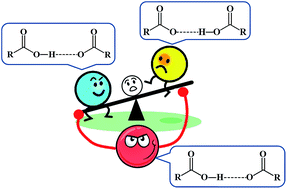Tuning of the double-well potential of short strong hydrogen bonds by ionic interactions in alkali metal hydrodicarboxylates†
Abstract
Short strong hydrogen bonds within crystals of sodium and potassium hydrofumarates were investigated by means of high-resolution and multitemperature X-ray diffraction studies. Various parameters, including geometry data, displacement parameters and cation–anion interaction energy, are considered to discuss hydrogen atom disorder. The influence of cation–anion interactions, being mainly electrostatic in nature, on the H-bond peculiarities is discussed. Equations interlinking the distance and energy of metal-oxygen interactions are introduced for carboxylates of sodium and potassium.


 Please wait while we load your content...
Please wait while we load your content...